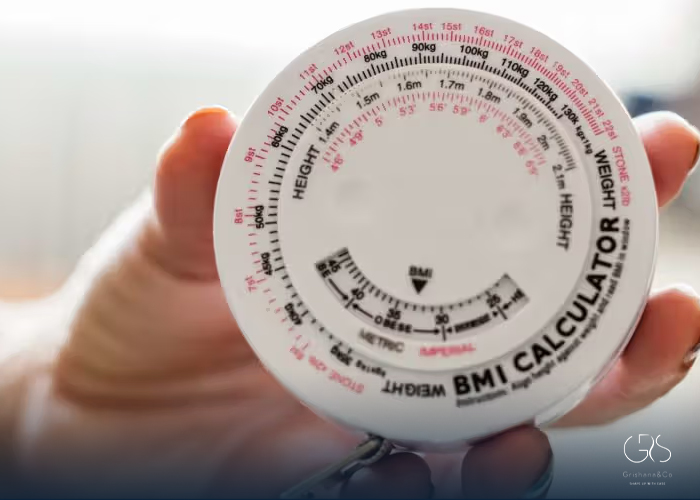In the ever-evolving world of health and wellness, the Body Mass Index (BMI) has long been the go-to measurement for assessing an individual’s health status. However, as our understanding of the human body and its complexities deepens, it becomes apparent that BMI falls short in accurately capturing overall health. In this comprehensive article, we will delve into the flaws of BMI and explore a promising alternative: body composition analysis. By examining diverse perspectives backed by relevant statistics, we aim to revolutionize the way we approach health assessment and strive for a more comprehensive understanding of our well-being.
BMI: Limitations and Criticisms
BMI, as a measurement solely based on height and weight, fails to consider several critical factors that play a crucial role in determining overall health. While it served its purpose as a quick and easy tool to assess obesity levels on a population scale, its suitability for individual health evaluation has been questioned. Some of the significant limitations and criticisms of BMI include:
1.Neglecting Muscle Mass: BMI does not differentiate between muscle mass and fat mass, leading to inaccuracies, particularly among individuals with high muscle mass. Research has shown that individuals with higher muscle mass may have a higher BMI, categorizing them as overweight or obese, despite having a healthy body composition.
2.Ignoring Body Fat Percentage: BMI overlooks the percentage of body fat, which is an essential indicator of health. It fails to distinguish between visceral fat (located within the abdomen) and subcutaneous fat (found beneath the skin), both of which carry different health implications.
3.Disregarding Individual Differences: BMI does not account for variations in body types, ages, genders, and ethnicities, leading to the application of a one-size-fits-all approach that may not adequately address individual health concerns.

Body Composition Analysis: A Promising Alternative
Amidst the shortcomings of BMI, a more comprehensive approach has emerged – body composition analysis. This method takes into account various components that contribute to our physique, including body fat percentage, muscle mass, bone density, and water composition. By evaluating these factors, a more accurate representation of an individual’s health can be derived, giving rise to a more comprehensive assessment tool.
The Role of Body Fat Percentage
While BMI fails to consider body fat percentage, body composition analysis places significant emphasis on this crucial aspect of health. A high body fat percentage, especially when accompanied by excessive visceral fat, has been linked to increased health risks, including heart disease, diabetes, and certain types of cancer. By measuring body fat percentage, individuals can gain a deeper understanding of their health and take proactive steps toward fat reduction and overall well-being.

Muscle Mass: The Silent Hero
One of the most significant advantages of body composition analysis over BMI lies in its ability to recognize and appreciate muscle mass. While higher muscle mass may increase overall body weight, it is essential in maintaining functional strength, metabolic balance, and overall physical health. By focusing on muscle mass rather than fixating solely on weight or BMI, individuals can set realistic goals that prioritize building a stronger, healthier body.

Diverse Perspectives and Statistics
To provide a well-rounded view, it is essential to examine diverse perspectives on the limitations of BMI and the efficacy of body composition analysis. Researchers and healthcare professionals across the globe have recognized the flaws of BMI and have actively explored alternatives. Here are some relevant statistics and perspectives:
- A study conducted by the American Journal of Clinical Nutrition found that BMI categorizations for obesity failed to accurately identify metabolic health impairments in a significant percentage of individuals.
- The World Health Organization (WHO), while acknowledging the simplicity and usefulness of BMI at a population level, also states that it may not be as reliable on an individual level.
- A meta-analysis published in the journal Obesity Reviews concluded that body composition analysis, as compared to BMI, provides a more precise measurement of adiposity and can be an effective tool for assessing health risks.
The Journey Towards Optimal Health
Moving beyond BMI and embracing body composition analysis requires a shift in mindset and a commitment to comprehensive health evaluation. It is crucial to recognize that health is more than a numerical value or a single indicator; it encompasses physical, mental, and emotional well-being. While body composition analysis presents a promising alternative for health assessment, it should be considered in conjunction with other indicators such as cardiovascular health, blood pressure, cholesterol levels, and individual goals.
Conclusion
The limitations of BMI have led to the exploration of a more accurate and comprehensive alternative: body composition analysis. By considering factors such as body fat percentage and muscle mass, this measurement offers a much more nuanced understanding of an individual’s health status. Embracing this alternative can revolutionize our approach to health evaluation and empower us to make informed decisions that prioritize overall well-being. Let us embark on this journey, leaving behind the limitations of BMI, and embrace a new era of health assessment.
Sources
- American Journal of Epidemiology, Body Mass Index and All-Cause Mortality: A Meta-Analysis
- The Lancet, Body composition analysis: An alternative to BMI for estimating disease risk?
- Obesity, Body Composition and Mortality in Men and Women: Results From the European Prospective Investigation Into Cancer in Norfolk (EPIC-Norfolk) Cohort Study
- Frontiers in Physiology, Body Composition Analysis as a Health Indicator: An Overview of Methods and Applications
- Nutrients, Evaluation of Body Composition in Clinical Practice





